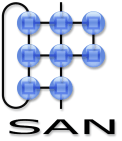IN-VEHICLE NETWORKS (InVecNet)
Overview
By the nature of in-vehicle environment, automotive electronic systems consist of heterogeneous real-time embedded networks, performing communication between nodes (electric control units, ECU) using different in-vehicle communication protocols. Even in the same network there may exist heterogeneity between the node structures (processing unit, memory and I/O interface). Increasing safety, performance, cost and comfort requirements reveals the need for new technologies and systems as well as new high speed in-vehicle networks such as TTP/C, byteflight and FlexRay. The properties and requirements of automotive systems have an important role on determining the appropriate communication protocol. A detailed communication analysis based on a detailed model; considering not only within the network but also interactions between different networks, and tasks; should be performed to make an efficient decision.
People
Recent Studies and Results
-
Survey on real-time embedded automotive electronics and in-vehicle communication networks
-
Studies on response time analysis of in-vehicle communication protocols: CAN, byteflight and FlexRay.
Initial Research Directions
-
RTS meeting presentation on in-vehicle networks and performance attributes: slides
-
RTS meeting presentation on automotive domains and possible research directions: slides
-
RTS meeting presentation on the AUTOSAR standard: slides
Links
System Architecture and Networking
Mathematics and Computer Science Department
Eindhoven University of Technology


